|
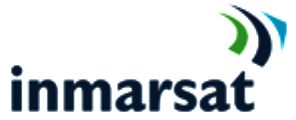
AUTONOMOUS
SHIPS SEMINAR - Thu 13 Dec 2012 - Inmarsat, London
Driver-less trains have been operating in London for 45 years, unmanned spacecraft have been flying for over half a century, 40% of flights by the
US military are unmanned and driver-less cars have been demonstrated.
What technologies do we need to make unmanned surface ships a practical proposition?
This seminar is aimed at the marine industry including practising mariners, and will look at what is needed to operate unmanned vessels, what is available now, what is available from other sectors, what can be adapted, and what is missing and would need to be developed.
Presentations will include:
* Human factors in autonomous systems design & sensor avoid systems - Dr Dale Richards, Director – Human Technology Centre Coventry University
* Technology from unmanned aerial vehicles - Philip Church, Helios Technology Ltd
* Space industry approach to reliable, fault-tolerant systems - Dr Doug Liddle, Surrey Satellite Technology Ltd
* Secure and reliable communications at sea - Inmarsat
* Risk and reliability in under water robots - Dr Mario Brito, National Oceanography Centre
* Secure navigation - Prof Andy Norris, Royal Institute of Navigation
* Technology Strategy Board Vessel Efficiency completion - Adrian Waddams, Transport Knowledge Transfer Network
Autonomous
ships seminar contacts
Inmarsat
- 99 City Rd - London
- EC1Y 1AX
- United Kingdom
JP
MORGAN and INMARSAT AUGUST 24 2012 -
Inmarsat preferred among satellite groups
The broker says demand overall for satellite services is rising and being driven by higher quality transmission needs.
Broker JP Morgan still likes the satellite business as a sector for investors, with the UK-based Inmarsat (LON:ISAT) its favourite pick.
The company came into being as an Intergovernmental Organization (IGO) in 1979 to provide global safety and other communications for the maritime community. Starting with a customer base of 900 ships in the early 1980s, it then grew rapidly to offer similar services to other users on land and in the air, until in 1999 it became the first IGO to be transformed into a private company.
The broker says demand overall for satellite services is rising and being driven by higher quality transmission needs such as HD, Ultra HD and High Speed Broadband.
The providers are split between fixed satellites services groups (FSS) and mobile satellite service (MSS) providers. JP Morgan says it prefers the MSS side, which it argues has a better revenue growth outlook.
FSS is expected to grow revenues by 3.6 per cent per year for the next 10 years, but MSS revenues should rise by 7 per cent annually over the same period driven by a 13 per cent growth in terminals and the take up of broadband.
This shift to broadband from a previously voice dominated market will provide an incremental up-sell opportunity to higher usage packages for operators that have the capacity.
JPM also expects revenues from government services to be a growing business for the satellite operators as governments will rely more and more on commercial satellite providers to provide their communication needs as they try to save costs.
Inmarsat is preferred for its position in the MSS business says JPM, which expects the company to report accelerating revenue growth paired with declining
capex.
Its price target is 700 pence compared to a current share price of 572 pence and its investment stance remains ‘overweight’.
Among the FSS operators, the broker prefers Eutelsat to SES.
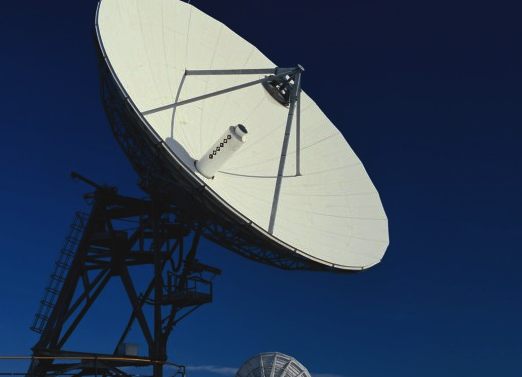
HISTORY
Inmarsat plc (LSE: ISAT) is a British satellite telecommunications company, offering global, mobile services. It provides telephony and data services to users worldwide, via portable or mobile terminals which communicate to ground stations through eleven geostationary telecommunications satellites. Inmarsat's network provides communications services to a range of governments, aid agencies, media outlets and businesses with a need to communicate in remote regions or where there is no reliable terrestrial network. The company is listed on the
London Stock Exchange and is a constituent of the FTSE 250 Index as of December 2011.
The company was originally founded in 1979 as the International Maritime Satellite Organization (Inmarsat), a not-for-profit international organization, set up at the behest of the International Maritime Organization (IMO), a UN body, for the purpose of establishing a satellite communications network for the maritime community. It began trading in 1982. From the beginning, the acronym "Inmarsat" was used. The intent was to create a self-financing body which would improve safety of life at sea. The name was changed to "International Mobile Satellite Organization" when it began to provide services to aircraft and portable users, but the acronym "Inmarsat" was kept. When the organisation was converted into a private company in 1999, the business was split into two parts: The bulk of the organisation was converted into the commercial company, Inmarsat plc, and a small group became the regulatory body, IMSO.
In 2005 Apax Partners and Permira bought shares in the company. The company was also first listed on the London Stock Exchange in that year. In March 2008 it was disclosed that U.S. hedge fund Harbinger Capital owned 28% of the company. In July 2009, Inmarsat completed the acquisition of a 19-per-cent stake in SkyWave Mobile Communications Inc., a provider of Inmarsat D+/IsatM2M network services which in turn purchased the GlobalWave business from TransCore. On 15 April 2009 Inmarsat completed the acquisition of satellite communications provider Stratos Global Corporation (Stratos)
Inmarsat won the 2010 MacRobert Award for its Broadband Global Area Network (BGAN) service, overcoming the three other shortlisted companies.
[edit] OperationsAside from its commercial services, Inmarsat provides global maritime distress and safety services (GMDSS) to ships and aircraft at no charge, as a public service.
Services include traditional voice calls, low-level data tracking systems, and high-speed Internet and other data services as well as distress and safety services. The most recent of these provides GPRS-type services at up to 492 kbit/s via the Broadband Global Area Network (BGAN) IP satellite modem the size of a notebook
computer. Other services provide mobile Integrated Services Digital Network (ISDN) services used by the media for live reporting on world events via videophone.
The price of a call via Inmarsat has now dropped to a level where they are comparable, and in many cases favorable, to international roaming costs, or hotel phone calls. Voice call charges are the same for any location in the world where the service is used. Tariffs for calls to Inmarsat country codes vary, depending on the country in which they are placed. Inmarsat primarily uses country code 870 (see below).
Newer Inmarsat services use an IP technology that features an always-on capability where the users are only charged for the amount of data they send and receive, rather than the length of time they are connected.This applies specifically to BGAN and MPDS.
The satellites are digital transponders that receive digital signals, reform the pulses, and then retransmit them to ground stations. Ground stations maintain usage and billing data and function as gateways to the public switched telephone network and the Internet.
The first (F1) and second (F2) of Inmarsat's most recent series of satellites, known as the "I4" satellites, were launched in June and November 2005. The third and final satellite (F3) was launched from the Cosmodrome in Kazakhstan on the 18 August 2008. These were the largest commercial
telecommunications satellites ever launched. Each satellite is equipped with a global beam, 19 regional spot beams, and over 200 narrow spot beams.
In addition to its own satellites, Inmarsat has a collaboration agreement with ACeS regarding handheld voice services.
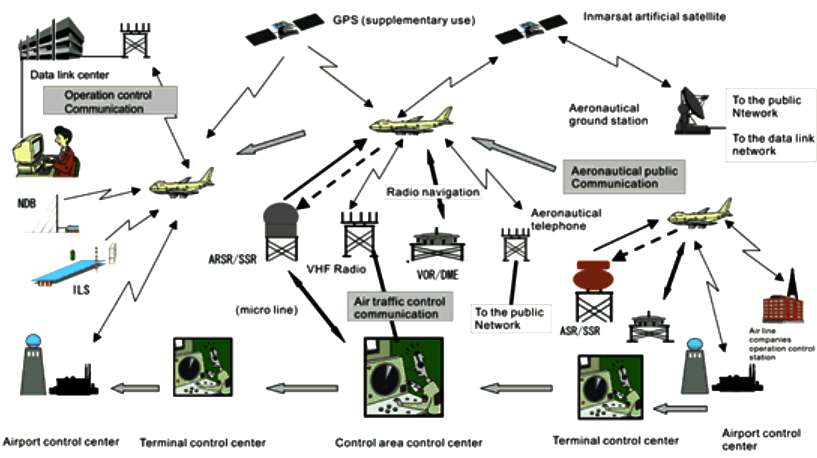
Coverage
There are three types of coverage related to each Inmarsat satellite.
1. Global beam coverage
Each satellite is equipped with a single global beam that covers up to one-third of the Earth's surface, apart from the poles. Overall, global beam coverage extends from latitudes of −82 to +82 degrees regardless of
longitude.
2. Regional spot beam coverage
Each regional beam covers a fraction of the area covered by a global beam, but collectively all of the regional beams offer virtually the same coverage as the global beams. Use of regional beams allow user terminals (also called mobile earth stations) to operate with significantly smaller antennas. Regional beams were introduced with the I-3 satellites. Each I-3 satellite provides four to six spot beams; each I-4 satellite provides 19 regional beams.
3. Narrow spot beam coverage
Narrow beams are offered by the three Inmarsat-4 satellites. Narrow beams vary in size, tend to be several hundred kilometers across. The narrow beams, while much smaller than the global or regional beams, are far more numerous and hence offer the same global coverage. Narrow spot beams allow yet smaller antennas and much higher data rates. They form the backbone of Inmarsat's handheld (GSPS) and broadband services (BGAN). This coverage was introduced with the I-4 satellites. Each I-4 satellite provides around 200 narrow spot beams.
| Satellite |
Coverage |
Longitude |
Vehicles |
Launch date (GMT) |
Services / notes |
| Inmarsat-4 satellites |
| Inmarsat-4 F1 |
I-4 Asia-Pacific |
143.5° east |
Atlas
V (431) |
11 Mar 2005 |
BGAN family, SPS and lease
services |
| Inmarsat-4 F2 |
I-4 Europe, Middle-East, Africa |
25° east |
Sea
Launch Zenit-3SL |
8 Nov 2005 |
BGAN family, SPS and lease
services |
| Inmarsat-4 F3 |
I-4 Americas |
98° west |
Proton-M/Briz-M |
18 Aug 2008 |
BGAN family and lease services |
| Inmarsat-3 satellites |
| Inmarsat-3 F1 |
IOR |
64.5° east |
Atlas
IIA |
3 April 1996 |
Existing and evolved services only |
| Inmarsat-3 F2 |
AOR-E |
15.5° west |
Proton-K
D-1-E |
6 Sep 1996 |
Existing and evolved services only |
| Inmarsat-3 F3 |
POR |
178° east |
Atlas
IIA |
18 Dec 1996 |
Existing and evolved services only |
| Inmarsat-3 F4 |
AOR-W |
54° west |
Ariane
44L (V97) |
3 Jun 1997 |
Existing and evolved services only |
| Inmarsat-3 F5 |
I-3 Europe, Middle-East, Africa |
25° east |
Ariane
44LP (V105) |
4 Feb 1998 |
Various leases |
| Inmarsat-2 satellites
(primarily used for leases) |
| Inmarsat-2 F1 |
|
|
Delta
II (6925) |
30 Oct 1990 |
Various leases |
| Inmarsat-2 F2 |
POR |
143° east |
Delta
II (6925) |
8 Mar 1991 |
Various leases |
| Inmarsat-2 F3 |
|
|
Ariane
44L |
16 Dec 1991 |
Decommissioned 2006 |
| Inmarsat-2 F4 |
|
|
Proton-K |
15 April 1992 |
Decommissioned 2012 |
COUNTRY
CODES
The permanent telephone country code for calling Inmarsat destinations is:
870 SNAC (Single Network Access Code)
The 870 number is an automatic locator; you don't have to know to which satellite the destination Inmarsat terminal is logged-in. SNAC is now usable by all Inmarsat services.
Country codes phased out on 31 December 2008 were
871 Atlantic Ocean Region – East (AOR-E)
872 Pacific Ocean Region (POR)
873 Indian Ocean Region (IOR)
874 Atlantic Ocean Region – West (AOR-W)
The other four country codes corresponded to the areas that Inmarsat satellites cover (normally one satellite per area). These areas were commonly called "Ocean Regions". With the advent of SNAC on 870, the older country codes were no longer needed. They were formally phased out on 31 December 2008 but may still be routed by some regional carriers.
Networks
Inmarsat has developed a series of networks providing certain sets of services (most networks support multiple services). They are grouped into two sets, 1) existing and evolved services, and 2) advanced services. Existing and evolved services are offered through land earth stations which are not owned nor operated by Inmarsat, but through companies which have a commercial agreement with Inmarsat. Advanced services are provided via distribution partners but the satellite gateways are owned and operated by Inmarsat directly.
Advanced services
The "BGAN Family" is a set of IP-based shared-carrier services, as follows:
BGAN: Broadband Global Area Network for use on land. BGAN benefits from the new I-4 satellites to offer a shared-channel IP packet-switched service of up to 492 kbit/s (uplink and downlink speeds may differ and depend on terminal model) and a streaming-IP service from 32 up to X-Stream data rate (services depend on terminal model). X-Stream delivers the fastest, on demand streaming data rates from a minimum of 384 kbit/s up to around 450 kbit/s (service depend on location of user and terminal model). Most terminals also offer circuit-switched Mobile ISDN services at 64 kbit/s and even low speed (4.8 kbit/s) voice etc. services. BGAN service is available globally on all I4 satellites.
FleetBroadband (FB): A maritime service, FleetBroadband is based on BGAN technology, offering similar services and using the same infrastructure as BGAN. A range of Fleet Broadband user terminals are available, designed for fitting on ships.
SwiftBroadband (SB): An aeronautical service, SwiftBroadband is based on BGAN technology and offers similar services. SB terminals are specifically designed for use aboard commercial, private, and military aircraft.
BGAN M2M: Which was launched at the beginning of January 2012, will deliver a global, IP-based low-data rate service, for users needing high levels of data availability and performance in permanently unmanned environments. Ideally suited for high frequency, very low latency data reporting, BGAN M2M will prove extremely attractive for monitoring fixed assets such as pipelines and oil well heads, or backhauling electricity consumption data within a utility.
M2M
communications
IsatM2M: IsatM2M is a global, short burst data, store and forward service that will deliver messages of 10.5 or 25.5 bytes in the send direction, to 100 bytes in the receive direction. The service is delivered to market via two partners - SkyWave Mobile Communications and EMS. Each has their own solutions to integrate the service into customers’ infrastructure.
Global Voice
Services
IsatPhone Pro: IsatPhone Pro is Inmarsat's own-designed and manufactured robust mobile satellite phone, offering clear voice telephony. It also comes with a variety of data capabilities, including SMS, short message emailing and GPS look-up-and-send, as well as supporting a data service of up to 20kbit/s.
IsatPhone Link: IsatPhone Link is a low-cost, fixed, global satellite phone service. It provides essential voice connectivity for those working or living in areas outside of cellular coverage and also comes with a variety of data capabilities.
FleetPhone: Inmarsat's FleetPhone service is a fixed phone service ideal for use on smaller vessels where voice communications is the primary requirement or on vessels where additional voice lines are needed. It provides a low-cost, global satellite phone service option for those working or sailing outside of cellular coverage.
Existing and Evolved services, based on older technologies, as follows:
Aeronautical (Classic Aero): provides voice/fax/data services for aircraft. Three levels of terminals, Aero-L (Low Gain Antenna) primarily for packet data including ACARS and ADS, Aero-H (High Gain Antenna) for medium quality voice and fax/data at up to 9600 bit/s, and Aero-I (Intermediate Gain Antenna) for low quality voice and fax/data at up to 2400 bit/s. Note, there are also aircraft rated versions of Inmarsat-C and mini-M/M4. The aircraft version of GAN is called Swift64.
Inmarsat-B: provides voice services, telex services, medium speed fax/data services at 9.6 kbit/s and high speed data services at 56, 64 or 128 kbit/s. There is also a 'leased' mode for Inmarsat-B available on the spare Inmarsat satellites.
Inmarsat-C: effectively this is a "satellite telex" terminal with store-and-forward, polling etc. capabilities. Certain models of Inmarsat-C terminals are also approved for usage in the GMDSS system, equipped with GPS.
Inmarsat-M: provides voice services at 4.8 kbit/s and medium speed fax/data services at 2.4 kbit/s. It paved the way towards Inmarsat-Mini-M.
Mini-M: provides voice services at 4.8 kbit/s and medium speed fax/data services at 2.4 kbit/s. One 2.4kbit/s channel takes up 4.8kbit/s on the satellite.
GAN (Global Area Network): provides a selection of low speed services like voice at 4.8 kbit/s, fax & data at 2.4 kbit/s, ISDN like services at 64 kbit/s (called Mobile ISDN) and shared-channel IP packet-switched data services at 64 kbit/s (called Mobile Packet Data Service MPDS, formerly Inmarsat Packet Data Service – IPDS). GAN is also known as "M4".
Fleet: actually a family of networks that includes the Inmarsat-Fleet77, Inmarsat-Fleet55 and Inmarsat-Fleet33 members. Much like GAN, it provides a selection of low speed services like voice at 4.8 kbit/s, fax/data at 2.4 kbit/s, medium speed services like fax/data at 9.6 kbit/s, ISDN like services at 64 kbit/s (called Mobile ISDN) and shared-channel IP packet-switched data services at 64 kbit/s (called Mobile Packet Data Service MPDS). However, not all these services are available with all members of the family. The latest service to be supported is Mobile ISDN at 128 kbit/s on Inmarsat-Fleet77 terminals.
Swift 64: Similar to GAN, providing voice, low rate fax/data, 64kbit/s ISDN, and MPDS services, for private, business, and commercial aircraft. Swift 64 is often sold in a multi-channel version, to support several times 64kbit/s.
Inmarsat D/D+/IsatM2M: Inmarsat's version of a pager, although much larger than terrestrial versions. Some units are equipped with GPS. The original Inmarsat-D terminals were one-way (to mobile) pagers. The newer Inmarsat-D+ terminals are the equivalent of a two-way pager. The main use of this technology nowadays is in tracking trucks and buoys and SCADA applications. SkyWave Mobile Communications is a provider of D/D+/IsatM2M satellite data services with its DMR and SureLinx series products. SkyWave also provides satellite tracking, monitoring and control capabilities through its GlobalWave MT series products. Competing systems such as from Skybitz only operate on the MSAT geostationary satellite over North America.
MPDS (Mobile Packet Data Service): Previously known as IPDS, this is an IP-based data service in which several users share a 64kbit/s carrier in a manner similar to ADSL. MPDS-specific terminals are not sold; rather, this is a service which comes with most terminals that are designed for GAN, Fleet, and Swift64.
IsatPhone: provides voice services at 4.8 kbit/s and medium speed fax/data services at 2.4 kbit/s. This service emerged from a collaboration agreement with ACeS, and is available in the EMEA and APAC satellite regions. Coverage is available in Africa, the Middle-East, Asia, and Europe, as well as in maritime areas of the EMEA and APAC coverage.
Withdrawn Services
Regional BGAN (R-BGAN): was an IP-based, shared carrier service offered on a regional basis. The service was superseded by BGAN and was withdrawn at the end of 2008.
Inmarsat-A: was the original Inmarsat service, established in 1975 by Comsat. It initially offered analog FM voice and telex services and, optionally, high speed data services at 56 or 64 kbit/s. The service was withdrawn at the end of 2007.
Inmarsat-E: A global maritime distress alerting service using small Emergency Position Indicating Rescue Beacons (EPIRB) that automatically relayed distress messages to maritime Rescue Coordination Centres. This service has been withdrawn in favor of other similar services offered by Cospas-Sarsat.

New projects underway
Global XpressIn August 2010 Inmarsat awarded Boeing a contract to build a constellation of three Inmarsat-5 satellites, as part of a US$1.2 billion worldwide wireless broadband network called Inmarsat Global Xpress. The three Inmarsat-5 (I-5) satellites will be based on Boeing's 702HP spacecraft platform. The first is scheduled for completion in 2013, with full global coverage expected by the end of 2014. The satellites will operate at Ka-band in the range of 20–30 GHz. Each Inmarsat-5 will carry a payload of 89 small Ka-band beams which combined will offer global Ka-band spot coverage. In addition each satellite will carry six fully steerable beams that can be pointed at commercial or government traffic hotspots. According to Inmarsat, Global Xpress will deliver download speeds in excess of 60Mbps to a 60cm dish. As a result of Global Xpress wide coverage satellites' bandwidth of only 12Gbps each will be moderate compared to Ka band satellites with a narrower footprint.
There are plans to offer high-speed inflight broadband on airliners through Global Xpress.
In February 2011 Inmarsat announced that iDirect had been awarded the contract to provide both the ground segment and the 'core module' that provides the key electronics in the new GX maritime (and later for other markets) terminals.
iDirect was already established as the leading player in the maritime VSAT field and the award of this contract confirmed their dominance of this market. The proposed GX system will deliver data at rates of up to 50 Mbit/s -an order of magnitude faster than existing VSAT systems using C-band or Ku-band satellite capacity and two orders faster than the existing L-band services.
Inmarsat's foray into S-band, mobile services
On 30 June 2008 the
European Parliament and the Council adopted the European’s Decision to establish a single selection and authorisation process (ESAP – European S-band Application Process) to ensure a coordinated introduction of mobile satellite services (MSS) in Europe. The selection process was launched in August 2008 and attracted four applications by prospective operators (ICO, Inmarsat, Solaris Mobile, TerreStar).
In May 2009, the European Commission selected two operators, Inmarsat Ventures and Solaris Mobile, giving these operators “the right to use the specific radio frequencies identified in the Commission's decision and the right to operate their respective mobile satellite systems". EU Member States now have to ensure that the two operators have the right to use the specific radio frequencies identified in the Commission's decision and the right to operate their respective mobile satellite systems for 18 years from the selection decision. The operators are compelled to start operations within 24 months (May 2011) from the selection decision.
Europasat
Inmarsat's S-band satellite programme, called EuropaSat, will deliver mobile multimedia broadcast, mobile two-way broadband telecommunications and next-generation MSS services across all 27 member states of the European Union and as far east as Moscow and Ankara by means of a hybrid satellite/terrestrial network. It will be built by Thales Alenia Space and launched in early 2011 launched by ILS.[33] The EuropaSat has been put on hold in late 2009. Inmarsat instead plans to seek external investors to fund the project, and ultimately to spin it off as a separate company.
Alphasat for extended L-band services
Planned for launch in 2013, Alphasat I-XL will be carried by an [[Ariane 5 ECA] ECA in from the Guiana Space Centre, Europe’s spaceport in Kourou, French Guiana. The satellite will be built by Astrium using an Alphabus platform, and will weigh more than six tons at launch. The new-generation Alphasat I-XL will be positioned at 25 degrees East to offer advanced mobile voice and data communications services across Europe, Africa and the Middle East using L-Band. It will feature a new generation digital signal processor for the payload, a 12-meter aperture antenna reflector. Its design life is 15 years.
In addition, Alphasat will embark three ESA-provided technology demonstration payloads: an advanced star tracker using active pixel technology, an optical laser terminal for geostationary to low-Earth orbit communication at high data rates and a dedicated payload for the characterization of transmission performance in the Q-V band in preparation for possible commercial exploitation of these frequencies.
Inmarsat™Description Maritime Satellite Communication System
Inmarsat operates five communication systems: Inmarsat A, Inmarsat B,
Inmarsat C, Inmarsat mini-M and Inmarsat E distress alerting system which are the right choice for safety at sea and commercial communications.
Inmarsat A is the original analogue Inmarsat satellite communication system that provides voice, telex, fax, data (9.6 kbit/sec) and high speed data (56/64 kbit/sec) services. The system is GMDSS compliant and provides telephone and telex distress calling to a Rescue Coordination Centre.
Inmarsat B is a digital successor to Inmarsat A and offers similar capabilities but with more efficient use of the resources and low call charges. The system is also GMDSS compliant and provides telephone and telex distress calling to a Rescue Coordination Centre.
Inmarsat C is a cornerstone of the GMDSS supporting 5 out of 9 communication functions defined in the IMO SOLAS Convention, Chapter IV. It is a packet data communication system providing store and forward messaging including e-mailing, distress alerting and distress priority messaging to associated Rescue Coordination Centres, reception of maritime safety information via the International SafetyNET service, data reporting and polling service. It is also very important that Inmarsat C is used to send messages to a short code or two-digit address, e.g. sending meteorological reports, navigational hazards and warnings, request for medical advice and medical assistance, requests for search and rescue assistance and sending ship position reports to shore authorities.
EGC SafetyNET provides an efficient and low-cost means of transmitting maritime safety information to vessels at sea and is used by meteorological, hydrographic, search and rescue and coastguard co-ordination authorities. Messages are addressed to ships at sea using IMO defined NAVAREAs/METAREAs, coastal areas or sea areas defined by a circular, e.g. area around vessel in distress or rectangular area.
Inmarsat mini-M is a the smallest, lightweight and cost effective satellite communication system that provides high quality voice, data, fax and e-mail services at the speed of 9.6 kbit.sec. It operates via Inmarsat spot beams in four ocean regions like a cellular phone with maritime coverage. The system is small in size and low weight and can be easily installed on smaller maritime users. Inmarsat Mini-M is not GMDSS compliant and does not support safety services.
Inmarsat E is an Emergency Position Indicating Radio Beacon (EPIRB) system which provides distress alerting capability via Inmarsat satellites. Distress alerts are handled automatically and received at associated Rescue Coordination Centres within, typically, two minutes after activation. Inmarsat E EPIRBs have built-in Global Positioning System (GPS) receivers, which provide accurate distress position information and are small and lightweight enough to be installed on smaller vessels. Two Land Earth Stations in each out of four Inmarsat ocean regions give 100% redundancy in case of failure or outages associated with any of the LESs.
The Inmarsat E system supports "Float Free" EPIRBs which incorporate the following features: integrated GPS receiver which is accurate to within 200 metres; automatic activation when the EPIRB is hydrostatically released by "floating free"; remote activation and information input from vessels bridge or other manned situation; optional Search and Rescue Radar Transponder (SART); optional 121.5MHz locator beacon; high intensity, low duty cycle flashing light.
The INMARSAT Fleet F33 service is the newest addition to the Fleet family of satellite maritime data communication services that offers mobile voice communications and packet data technology.
Fleet F33 has been designed for vessels that require a smaller antenna, lighter above-deck equipment and a low-cost, simple hardware installation. It is ideal for small, medium or large
leisure vessels.
The SAILOR Fleet55 communications terminal offers high-speed and cost effective voice and data communication in a compact package. With high quality audio, e-mail and Internet it provides ocean-going vessels with all modern communication options. In a made-for-the-sea construction.
The SAILOR Fleet55 terminal acts as a hub for all your communication needs. Connect desktop phones, payphones, DECT phones and fax machines or add an IP router to integrate the vessel with onshore management systems or provide e-mail and Internet. The system is simple to configure via user friendly software on a standard
PC.
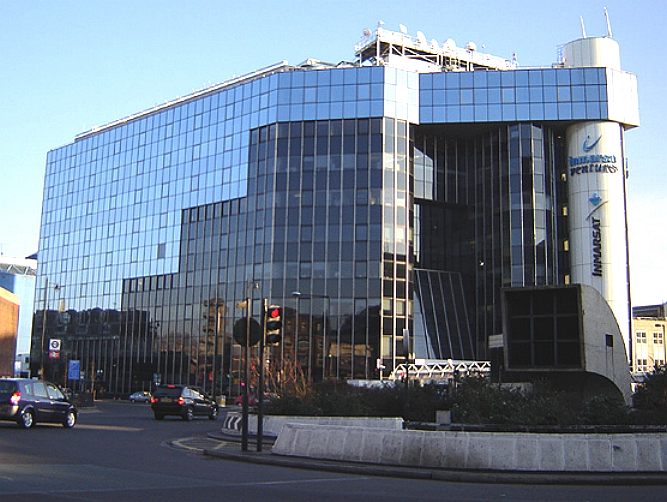
Inmarsat Fleet
Inmarsat Fleet F77, unveiled at Europort exhibition in November 2001, is the first in new family of Inmarsat services for the maritime industry in eight years and brings a new dimension to
maritime
safety. Fleet F77 is the only service that meets the International Maritime Organisation's latest requirements - IMO Resolution A.888(21) "Criteria for the provision of mobile satellite communication systems in the Global Maritime Distress and Safety System (GMDSS)", by providing voice prioritisation and pre-emption.
This essential new prioritisation function comes as standard on Fleet F77 and allows the interruption and clearing of lower priority communications and routine calls to give way to voice communication for high priority distress, urgency and safety needs. The Resolution A.888(21) states that any system being designed for use in the GMDSS after 1 February 1999 should be able to recognise the four levels of priority in both ship-to-shore and shore-to-ship directions:
- Distress;
- Urgency;
- Safety; and
- Other (general/routine) communications
Rescue authorities calling a vessel equipped with Fleet F77 will always be able to contact a ship, even if the voice or data channel is in continuous use at a lower priority. Not only will pre-emption work seamlessly, it will always work in a hierarchical manner:
Distress priority P3 call will pre-empt all other communications;
Urgency priority P2 call will pre-empt both safety P1 and routine P0 calls; and
Safety priority P2 call will pre-empt a routine P0 call.
The introduction of Fleet F77 to the Inmarsat communications portfolio reinforces their continued commitment to the provision of international maritime safety. In addition, Inmarsat consistently exceeds the minimum IMO requirement for 99.9% system availability for ship-shore distress alerts.
The new IMO criteria were formulated following a maritime rescue incident in November 1994. The passenger liner "Achille Lauro" caught fire and sank off the coast of Somalia. The majority of the passengers (930) were subsequently rescued by the tanker "Hawaiian King", and the tanker "Chevron Perth" rescued a further 133. Upon being rescued, the survivors were keen to contact family and friends to let them know they were safe and well. In addition, the world's press was also keen to talk to survivors, to get first-hand accounts of the incident.
The subsequent increase in usage of the Inmarsat A terminal onboard the "Hawaiian King" prevented the Maritime Rescue Co-ordination Centre (MRCC) from contacting the ship. The situation was safely resolved by the MRCC using additional Inmarsat safety equipment, Inmarsat C, to alert the "Hawaiian King" to clear the voice channel on their Inmarsat A for safety communications.
Fleet F77 was at the design stage at the same time that the Resolution A.888(21) was being drafted. Once the new requirements were made clear, Inmarsat incorporated these into the design of Fleet F77. Provision of pre-emption in both directions also means that Inmarsat land
earth station operators (LESOs), which provide Fleet F77 services, are capable of offering this valuable safety service.
In addition to an advanced safety service, Fleet F77 will also deliver a wide range of commercial communications needs; voice, fax and data services at speeds of up to 64 kbit/s, including mobile ISDN and mobile packet data service (MPDS), where users are charged for the amount of information sent and received rather than the time for which they are connected. This will enable mariners to send and receive information on real-time basis, rather than the traditional practice of logging on once or twice a day.
Selection of mobile ISDN or MPDS depends on what a maritime user wants to send or receive. As a general rule, the mobile ISDN service is best used when transmitting large files or if a data speed or of the utmost importance. The MPDS can be more efficient for applications that are interactive in nature such as e-mail, web or Intranet access.
Fleet F77 supports a range of powerful new applications through its high speed data capability which include secure access to information online, image transfer, video and digital image communications. Fleet77 also delivers e-mail,
Internet and Intranet access plus a choice of two fax services. Some of maritime specific applications include graphical ocean charts and weather displays, navigational chart updates, database queries, accessing online safety information, telemedicine, vessel's telemetry transmission.
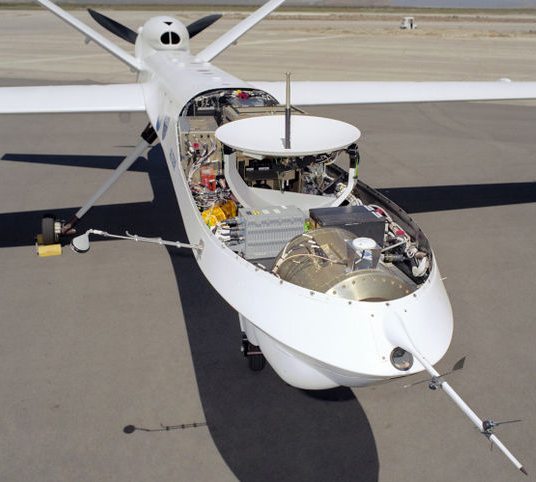
Air Traffic Control System
This is a system rendered between the Air Traffic Control Institutions and the aircraft to secure the safety and the mobility of aircraft by providing ground navigation or advice, information about aircraft and the airport weather condition.
VHF Cordless Telephone, HF Cordless Telephone
Air Route Surveillance Radar (ARSR), Airport Surveillance Radar (ASR), Secondary Surveillance Radar
(SSR).
VOLVO
OCEAN RACE
As Race Partner and official satellite communications provider to the Volvo Ocean Race 2011-12, Inmarsat’s satellite technology is a key enabler for all aspects of the race – for position reporting, sending live video footage or photos of on-board action to the world’s media, providing safety communications in the event of an accident, and for boosting crew morale by enabling them to call and email their loved ones back home.
Inmarsat’s Fleet Broadband service takes media coverage of the race into a whole new era. Faster transmission speeds deliver better quality live broadcasts – the first HDTV transmissions from
yachts in the middle of the ocean.
In recognition of the role broadcast media plays in bringing the excitement of the race to billions of spectators and delivering millions of dollars in valuable media coverage for race sponsors, Inmarsat will again present its Media Crew Member
(MCM) Award of 1,000 Euros (US$1,358) on each leg of the race, plus a 10,000 Euro (US$13,585) prize for the best overall contribution to race coverage.
Each Volvo Open 70 race boat will be fitted with a FleetBroadband 500 terminal, delivering voice and high-speed data communications. Competitors in the
Volvo Ocean Race 2011-12 will be the first sailors with access to the new ‘red button’ safety service on
FleetBroadband, giving instant one-touch contact with maritime rescue coordination
centres. Also onboard will be a compact FleetBroadband 150 for crew voice calling and IP data, two Mini-C systems for constant positioning data and additional global safety communications. In addition, the race is endorsing IsatPhone Pro, Inmarsat's new global satellite phone, by including it in the boats' safety
kits.
LINKS
Volvo
Ocean Race partners Inmarsat Proactive
Investors UK inmarsat preferred satellite groups by jp morgan London
Stock Exchange 22-06-05 inmarsat opens the london market Preliminary
Results 2011
Dollars
& Sense Satellitetoday.com. 2 January 2006
Private
equity orbits Inmarsat Investorschronicle.co.uk. 7 March 2008.
SkyWave
and partners wrap up three-part deal
Inmarsat
grabs the MacRobert engineering prize 8 June 2010
Making
things better – finalists announced for Britain's top engineering award.
BBC News. 10 May 2010
GMDSS
weather Weather.gmdss.org
BGAN
terminals Inmarsat.
Transforming
satellite newsgathering
one
world, one number". Inmarsat
BGAN
provides "eyes and ears" for oil rigs
Successful
launch for third Inmarsat-4 satellite Space-travel.com
How
the Inmarsat satellite system works Wcclp.com.
Inmarsat-4
f1 National Space Science Data Center.
All
go for giant comms satellite BBC News. 8 November 2005
ILS
Proton successfully launches Inmarsat-4 F3 satellite ILS. 19 August 2008.
Inmarsat
services Inmarsat.com
our
services at a glance Inmarsat
Private
Financing Gets Lift. Financialpost.com
Major
satellite operators adopt contrasting approaches to next-generation
high-throughput capacity
Superfast
in-flight connectivity on horizon as Inmarsat reveals $1.2b Ka plan
Direct
awarded new contract for Global Xpresss infrastructure.
Commission
boost for mobile satellite services. Europa.eu. 22 August 2007.
New
Satellites for Europe: Commission starts selection procedure Europa.eu.
European
Commission paves the way for European mobile satellite services EC14 May
2009.
Mobile
Satellite Services in Europe: Frequently Asked Questions Europa.eu.
Inmarsat
and Solaris win EU spectrum rights Reuters.
Pan-European
numbers and services Ec.europa.eu.
EU
selects Inmarsat to build pan-European network
Contract
signed with Astrium to build Alphasat payload
Inmarsat
Packet
Dynamics – U.S. Inmarsat Service Provider
Inmarsat
Satellite Repositioning
How
CNN streams video via Inmarsat
Marisat
1, 2, 3
MARECS
A, B, B2
Inmarsat-2
F1, 2, 3, 4
Inmarsat-3
F1, 2, 3, 4, 5
Inmarsat-4
F1, 2, 3
EuropaSat
Alphasat
I-XL (Inmarsat-XL)
Inmarsat
Product Information
https://www.regonline.co.uk/register/Attendee
Inmarsat - Wikipedia, the free encyclopedia
http://en.wikipedia.org/wiki/Inmarsat
Inmarsat plc (LSE: ISAT) is a British satellite telecommunications company, offering global, mobile services. It provides telephony and data services to users ...
Inmarsat at the heart of Volvo Ocean Race 2011-12
http://volvo.inmarsat.com/index.html
Central role for satellite in success of the race Our services make it happen, from relaying the action from the middle of the ocean to tracking the yachts and ...
Inmarsat Government
http://inmarsatgov.com/
Inmarsat Government Named Prime Contractor Under U.S. Government’s $2.6 Billion Program. September 5, 2012 –
Segovia
Inmarsat Satellite Communications Equipment Satellite
Satellite phone equipment for use with Inmarsat, ISatPhone satellite services
http://dictionary.reference.com/browse/Inmarsat
Inmarsat Government Online Store – Mobile Satellite Solutions ...
http://shop.inmarsatgov.com
Inmarsat Government has expanded its suite of end-to-end global communication solutions by bringing its customers superior mobile satellite products, coupled with ...
INMARSAT
http://inmarsat.vsnl.com/
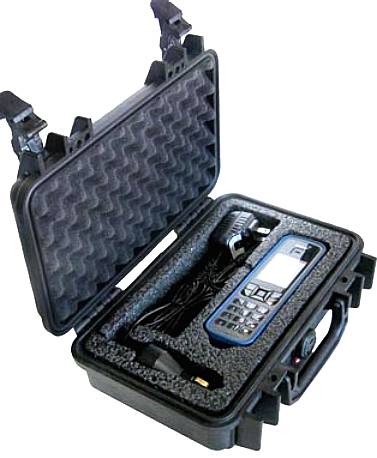
AVIATION
A - Z

When
a state of the art submarine falls into extremist hands
John
Storm is called in to recapture the renegade craft.
|






